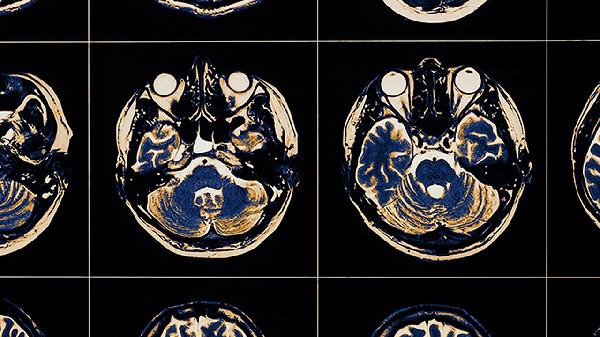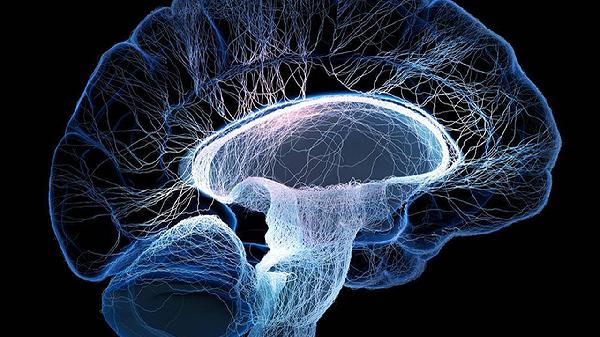Have you ever played a song and instantly started to feel better? Well, there's power in music and chances are, it impacts you more than you know. In a previous interview, neuroscientist Yewande Pearse, PhD, tells PS that music stimulates almost every brain structure. You may view music solely as a tool for motivation (think: running on the treadmill). But it can also calm us down by interfering with our fight-or-flight response, impacting the parasympathetic nervous system, autonomic nervous system, and endocrine system, Dr. Pearse says. Music may even help us change our thinking in an anxiety-evoking situation, she notes. This is why the practice of music therapy exists.
We already use music to reflect on life experiences and make sense of how we feel, says associate professor of music therapy at Shenandoah University Hakeem Leonard, PhD, MT-BC. In music therapy, qualified professionals like Dr. Leonard use evidence-based clinical processes to expand on that and offer support to clients dealing with an array of mental and physical health issues — from depression to post-surgery rehab. If you've ever considered giving music therapy a try, here's a breakdown of everything you need to know.
What Is Music Therapy?
The American Music Therapy Association defines music therapy as the clinical and evidence-based "use of music interventions to accomplish individualized goals within a therapeutic relationship by a credentialed professional who has completed an approved music therapy program." Board-certified music therapists have degrees in music therapy and a national MT-BC credential. They are not to be confused with art therapists, volunteer musicians, or therapists who happen to use music in their sessions, says Cait Carter, MT-BC, who works in an adult state psychiatric hospital.
Board-certified music therapist Gabby Salzarulo tells PS that she likes to define music therapy as, "using music to reach non-musical goals." What you do in specific sessions varies from person to person since everyone's needs are unique, she notes. Here's a list of activities you can expect to see in music therapy:
- Songwriting (can also include changing lyrics around in a pre-composed song)
- Lyric analysis
- Music listening
- Drawing to music
- Guided meditation along with music
- Making music (can include improv and may involve using drums or bells)
Carter notes that she uses music therapy to achieve much of what you'd work on in talk therapy. For example, she might utilize instruments in a group therapy session as a form of communication to work on interpersonal skills. Using instruments to have conversations, she says, tends to be less intimidating than talking. Meanwhile, songwriting and playing music promotes mindfulness. It encourages you to focus on the way the instrument and vibration feel in your hands, as well as the way that you experience sound. An important part of Carter's job is also assessing people to pinpoint their interests, the kind of music they listen to, if they play any instruments, and if they like to dance or to write music. "It's found that preferred music is most effective in music therapy. So if I decided to use Mozart with somebody who's a metal head, it's not going to be effective," she explains.
How Music Therapy Works in the Brain
Ever wondered why certain songs give you chills or make you feel like you're floating? That’s your brain lighting up like a Christmas tree. Dr. Pearse explains that music activates multiple brain regions simultaneously—auditory cortex for sound processing, the limbic system for emotions, and even motor areas if you’re tapping your foot. This widespread engagement is why music can be such a powerful therapeutic tool. It doesn’t just touch one part of your brain—it throws a full-on rave in there.
When you listen to music you love, dopamine—the feel-good neurotransmitter—gets released. That’s the same chemical that floods your system when you eat chocolate or crush a workout. But music therapy takes it a step further by structuring these natural responses into intentional interventions. For someone with anxiety, a therapist might use slow-tempo music to lower heart rate and cortisol levels. For depression, uplifting rhythms can stimulate motivation and emotional expression. The key is customization—what works for one person might not work for another, which is why board-certified therapists tailor every session.
Who Can Benefit from Music Therapy?
Music therapy isn’t just for musicians or people who can carry a tune. It’s for anyone—yes, even if you’ve been told you sing like a dying seagull. Carter works with psychiatric patients who may struggle with verbal communication but find solace in rhythm or melody. Meanwhile, Salzarulo has used music therapy with kids on the autism spectrum to improve social skills and with elderly patients to jog memories affected by dementia.
Here’s a quick rundown of conditions where music therapy has shown promise:
- Mental Health: Anxiety, depression, PTSD, schizophrenia
- Neurological Conditions: Stroke recovery, Parkinson’s, Alzheimer’s
- Developmental Disorders: Autism, ADHD
- Physical Rehabilitation: Post-surgery mobility, chronic pain management
- Palliative Care: Comfort for hospice patients
Dr. Leonard adds that even people without diagnosed conditions can benefit. Stressed college students, overwhelmed parents, or corporate warriors battling burnout—music therapy offers a way to reset without needing to articulate feelings verbally. Sometimes, strumming a guitar or drumming out frustration speaks louder than words.
What to Expect in a Music Therapy Session
First things first: no, you don’t need to be “good” at music. At all. Sessions are about process, not performance. If you’re imagining a stern teacher critiquing your pitch, think again. A typical session might start with a check-in—how you’re feeling, what you’re hoping to work on—followed by activities tailored to your goals. For example:
- For stress relief: Deep breathing paired with ambient soundscapes.
- For grief processing: Writing lyrics about loss or listening to meaningful songs.
- For motor skills: Playing simple percussion instruments to rebuild coordination.
Salzarulo emphasizes that sessions are collaborative. “You’re not a passive recipient,” she says. “We might experiment with different instruments or genres until we find what clicks.” Progress isn’t linear—some days might feel breakthroughs, others might just be about sitting with discomfort while a sad song plays. And that’s okay.
Debunking Myths About Music Therapy
it’s interactive and goal-driven. Myth #2: It’s only for kids or the elderly. Wrong again. Adults in high-stress jobs use it too. Myth #3: You need musical talent. Hard pass. Carter laughs, “I’ve had clients who ‘play’ the tambourine by staring at it. The point is engagement, not virtuosity.”
Another big one? That music therapy is a quick fix. Like any therapeutic modality, it requires time and consistency. But the upside is that it often feels less like work and more like… well, jamming out. As Dr. Leonard puts it, “You’re hacking your brain’s reward system while doing something enjoyable. That’s a win-win.”
So, if you’ve been curious about music therapy, there’s no harm in trying a session. Worst case? You spend an hour making noise and leave a little lighter. Best case? You discover a new way to heal—one chord at a time.
























